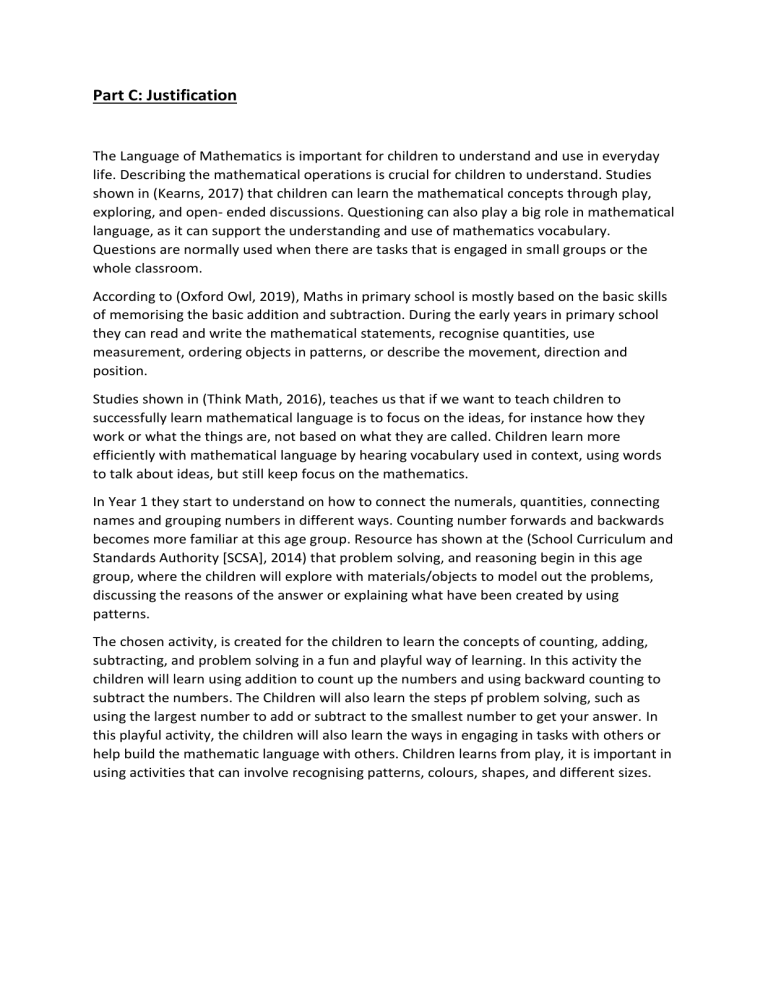
Part C: Justification The Language of Mathematics is important for children to understand and use in everyday life. Describing the mathematical operations is crucial for children to understand. Studies shown in (Kearns, 2017) that children can learn the mathematical concepts through play, exploring, and open- ended discussions. Questioning can also play a big role in mathematical language, as it can support the understanding and use of mathematics vocabulary. Questions are normally used when there are tasks that is engaged in small groups or the whole classroom. According to (Oxford Owl, 2019), Maths in primary school is mostly based on the basic skills of memorising the basic addition and subtraction. During the early years in primary school they can read and write the mathematical statements, recognise quantities, use measurement, ordering objects in patterns, or describe the movement, direction and position. Studies shown in (Think Math, 2016), teaches us that if we want to teach children to successfully learn mathematical language is to focus on the ideas, for instance how they work or what the things are, not based on what they are called. Children learn more efficiently with mathematical language by hearing vocabulary used in context, using words to talk about ideas, but still keep focus on the mathematics. In Year 1 they start to understand on how to connect the numerals, quantities, connecting names and grouping numbers in different ways. Counting number forwards and backwards becomes more familiar at this age group. Resource has shown at the (School Curriculum and Standards Authority [SCSA], 2014) that problem solving, and reasoning begin in this age group, where the children will explore with materials/objects to model out the problems, discussing the reasons of the answer or explaining what have been created by using patterns. The chosen activity, is created for the children to learn the concepts of counting, adding, subtracting, and problem solving in a fun and playful way of learning. In this activity the children will learn using addition to count up the numbers and using backward counting to subtract the numbers. The Children will also learn the steps pf problem solving, such as using the largest number to add or subtract to the smallest number to get your answer. In this playful activity, the children will also learn the ways in engaging in tasks with others or help build the mathematic language with others. Children learns from play, it is important in using activities that can involve recognising patterns, colours, shapes, and different sizes.

